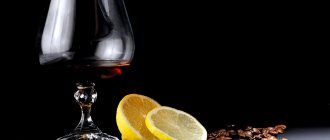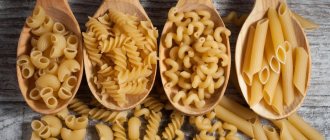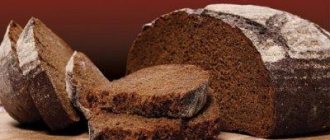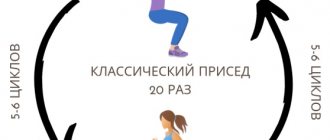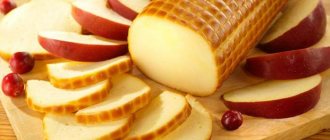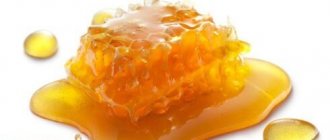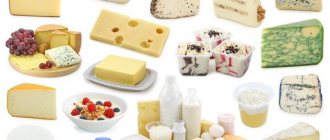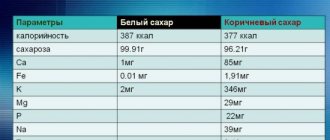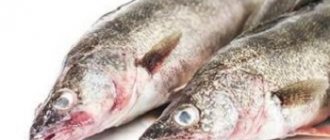This drink meets all the requirements of picky ladies: it has a pleasant taste, is not too strong, and in a small dose is also good for health. Only one question may bother ladies, especially those who are on a diet: how many calories are in a lady's drink? From which the following smoothly follows: won’t it destroy the complex relationship with one’s own body weight?
This drink meets all the requirements of picky ladies
Sparkling wine
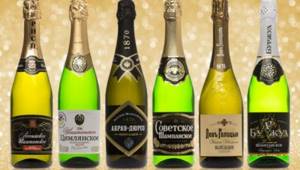
- South African sparkling wines are called Cap Classic;
- in Spain it is cava (“Cava”);
- in Italy – spumante (“Spumante”);
- in Germany - sects (“Sekt”);
- in France, outside the Champagne region, sparkling wines are labeled Crémant and Asti (“Crémant” in Alsace and Burgundy, “Asti” in Piedmont).
Champagne
Champagne is a sparkling wine produced in the French province of Champagne. All other drinks containing carbon dioxide can only be called sparkling. Champagne is produced by secondary fermentation in bottles.
Like everything ingenious, champagne was born by accident. In the 17th century, French winemakers suddenly received a “devilish” wine - a sparkling wine that burst the barrels in which it was aged (calorizator). Only after the creation of the technology of secondary fermentation - when it occurs directly in bottles - was the wine able to be tamed and magnificent champagne appeared.
Champagne is usually made from one grape variety (single varietal) or only three grape varieties are used: chardonnay, pinot noir and pinot meunier. The method by which champagne is prepared is called "champenoise", in which the first fermentation occurs in steel containers, then the wine is bottled, which lie in the cellars for six months. The wine bottles are then turned daily to collect sediment around the neck. Only a few winemakers master the process of disgorging (removing sediment from a bottle). After the champagne has become clear, it can be consumed, but such wine can also be stored for a long, almost unlimited, time, only improving the quality of taste.
Composition and energy value of ingredients per 100 g
The chemical composition of champagne is based on water, alcohol and sugar. It contains iron, magnesium, potassium, phosphorus and even vitamins PP and B2 in small quantities.
In terms of its calorie content, champagne can be classified as a light diet drink. The calorie content of champagne, depending on the variety, ranges from 53 to 100 kcal per 100 ml. If you choose the lowest calorie alcohol, then champagne is second only to beer and is many times ahead of strong drinks in this indicator:
- dessert wines (150 kcal);
- whiskey (250 kcal);
- vodka (231 kcal);
- and liqueurs (320 kcal).
The calorie content of sparkling wine is determined by two substances:
- alcohol (710 kcal per 100g);
- sugar (380 kcal per 100g).
Calorie content of different types of champagne
Champagne is everyone's favorite holiday drink. Besides this, it is a drink of victory. They celebrate weddings, births of children, victories in competitions, employment and other significant events.
At its core, champagne is a sparkling wine made from very specific grape varieties. The name comes from the name of the province of Champagne.
The grapes for the production of champagne must be white chardonnay or red pinot noir or pinot meunier (it is allowed, but very rarely practiced, to add a small amount of grapes of other varieties that were previously used in the production of champagne). Champagne made exclusively from Chardonnay grapes is called “white from white” (fr. blanc de blancs), exclusively from red grapes - “white from black” (fr. blanc de noirs). Champagne is usually a white wine, even if it is made from red grapes, because the juice is squeezed from the grapes very carefully, allowing only minimal contact with the skins of the grapes, which give the color to the red wine. Rose wines are also produced, either by extending the time the juice is in contact with the skins, which gives the wine a pink color, or by adding a small amount of red wine at the blending stage.
Types of champagne depending on the amount of sugar:
The amount of sugar added after secondary fermentation and aging is varied, resulting in varieties:
maximum - “doux” (means “sweet”);
“extra sec” (“extra-dry”);
"brut" ("dryest" or "brut")
“extra brut”/“brut nature”/“brut zero” (“extra brut”, “brut cuvée”; sometimes excessively dry - no sugar or liqueur is added at all).
Which champagne has the least calories?
The calorie content of champagne and sparkling wines will directly depend on the amount of sugar in it, i.e. from the variety.
– semi-dry – 78 Kcal;
– semi-sweet – 88 Kcal;
– sweet – 90 Kcal;
— Chardonnay – 90 Kcal;
If you consider that the usual capacity of a standard glass of champagne is only 150 grams, and it is not poured full (up to 100 grams), then one or two glasses will not significantly increase the calorie content of your diet. But a bottle of champagne is almost 700 calories, and an unpleasant intoxication.
Below is a table of calorie content of different types of sparkling drink.
The harm of champagne.
Unfortunately, there are certain problems with the production of this festive drink in our country. The quality of the drink does not meet any standards. During the holidays, up to 80% of low-quality goods arrive on the shelves, from elementary handicraft counterfeits to downright bad drinks.
What is the danger:
— alcohol with flavoring additives;
In order to avoid this you need to choose the right drink.
How to choose good champagne?
Price - a good drink cannot be cheap.
Small bubbles running in a thin thread
Factory rolled foil.
Perfect label and bottle
Don't buy on the eve of a holiday
According to Komsomol tests, up to 80% during the holidays do not correspond to quality.
Number of calories for dry, semi-dry, sweet, semi-sweet, Brut and other types of sparkling wine
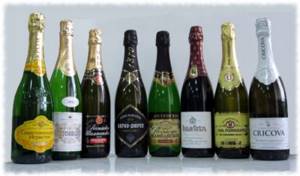
According to the current EU classification, there are 7 types of sparkling and champagne wines:
- Brut nature (brut zero) is the name given to wines produced without adding sugar for re-fermentation. They contain practically no sugar (from 0 to 3%). Brut Nature is the lowest calorie champagne wine.
- Extra brut - production technology allows you to add sugar to the wine for re-fermentation, but its content is extremely small. The amount of sugar, or as winemakers call it, the dosage is 0 to 6 g/liter.
- Brut is the most common variety of champagne throughout the world, but not in Russia. The dosage should be no more than 12 g/liter.
- Extra dry (extra dry, extra sec or extra seco) – dosage in this type of wine is from 12 to 17 g/liter.
- Dry (seco, dry or sec) – the dosage in this champagne is 17-32 g/liter.
- Semi-dry (Demi-sec, Semi-seco) is a very favorite variety in Russia. Sugar content from 32 to 50 g/liter.
- Sweet (Doux, Sweet, Dulce) – sugar content over 50 g/liter. This is exactly what champagne was like in the 17th and 18th centuries, when the proportion of sugar reached 200 grams per liter of sparkling wine. It was a sweet and sticky drink.
The semi-sweet wine beloved by Russians did not fall into the EU classification and is located between semi-dry and sweet wines, closer to the latter.
First - about the benefits
Champagne is extremely popular among girls and women for many reasons, including not only its exquisite taste and the aura of solemnity formed because it is drunk only on special occasions. The advantages of this drink are that it has an effect on the body similar to that of high-quality red wine, that is:
- strengthens the cardiovascular system;
- helps normalize blood pressure;
- improves blood supply to internal organs.
The drink owes all these properties to the content of a large amount of beneficial antioxidant substances. Important: all positive qualities appear only with normalized consumption - no more than two glasses per day. If this norm is exceeded, lovers of this drink may develop alcoholism or, as a lesser evil, overweight.
Energy value of the drink in 1 bottle, glass, 100 ml and in grams per liter
| Name | Sugar content in grams/liter | calorie content per 100 ml, kcal | calorie content of a glass of 120 ml, kcal | calorie content of a 750 ml bottle, kcal |
| Brut nature | 0 – 3 | 53 | 63,6 | 397,5 |
| "Extra brut" | 0 – 6 | 60 | 72 | 450 |
| Brut | less than 12 | 64 | 76,8 | 480 |
| Extra dry (extra dry, extra sec, extra seco) | 12 – 17 | 74 | 88,8 | 555 |
| Dry (dry, sec, seco) | 17 – 32 | 80 | 96 | 600 |
| Semi-dry sparkling (Demi-sec, Semi-seco) | 32 – 50 | 85 | 102 | 637,5 |
| Sweet sparkling (Doux, Sweet, Dulce) | > 50 | 100 | 120 | 750 |
Cons of wine diets
The Champagne diet has many positive qualities, but it’s difficult to talk about its usefulness. It does not contain foods that contain a lot of calcium. A person must receive 1200 mg of this substance per day, especially if he often drinks alcohol.

During the diet, it is imperative to take medications with a high calcium content - this will prevent bone fragility and prevent osteoporosis from appearing in a few years.
Of course, the Champagne diet is not available to everyone, because it requires large financial investments. A wine diet helps you get through all the holidays without causing damage to your liver. We can draw an unambiguous conclusion: champagne cannot cause a large increase in body weight, but such a diet will help you lose weight.
THESE ARTICLES WILL HELP YOU LOSE WEIGHT
Your feedback on the article:
( 572 ratings, average: 4.52 out of 5)
How many calories do Santo Stefano, Abrau-Durso, Bosco and other popular varieties have?
| Brand of champagne or sparkling wine | Nutritional value per 100 ml, kcal | Nutritional value in a standard 180 ml “champagne flute” glass filled 2/3 full, total 120 ml, kcal | Nutritional value in a standard 750 ml bottle, kcal |
| Vall de Juy Brut Nature DOCava | 53 | 64 | 398 |
| Moet and Chandon Rosé Imperial, rosé, brut | 64 | 77 | 480 |
| Dom Perignon vintage, white, brut | 70 | 84 | 525 |
| Ka Vergana Asti, white, sweet | 74 | 89 | 555 |
| Veuve Clicquot Ponsardin, white, brut | 75 | 90 | 563 |
| Bosco Anniverseri, semi-sweet, white | 75 | 90 | 563 |
| Bosca Anniveseri, semi-sweet, pink | 75 | 90 | 563 |
| Mondoro Asti DOCG, white, sweet | 77 | 92 | 574 |
| Martini Asti Piedmont white sweet | 80 | 96 | 600 |
| Santo Stefano Rosso Amabile, red semi-sweet | 81 | 97 | 608 |
| Santo Stefano Rosso Amabile, white semi-sweet | 81 | 97 | 608 |
| Don Gines, white, semi-dry | 82 | 98 | 615 |
| “Abrau-Durso”, brut, white | 90 | 108 | 675 |
| “Abrau-Durso”, semi-sweet white | 100 | 120 | 750 |
If you take care of your figure and avoid extra calories, then champagne is your choice. If you count every calorie at a party, dry and brut are your best option. The main thing is not to overload on snacks.
How does the calorie content of champagne vary and what does it depend on?
While enjoying exquisite sparkling products, be sure to take into account the fact that in addition to pleasant relaxation, they can cause harm to your body. Weight gain in this case is one of the most striking examples of what stable consumption of alcohol in large quantities can lead to.
And in this case, no alcohol is an exception. Like beer, vodka, rum or wine, champagne can seriously affect the health of its admirer.
Often the calorie content of sparkling wine is within 88 kcal per 100 ml of drink, but often this figure can be both lower and higher. And then we will consider what specific factors can influence such a significant indicator for the consumer.
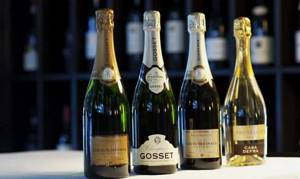
Sugar concentration
The fermentation process of alcoholic beverages is based on sugar. That is, if you are interested in the question of how many calories can be in semi-sweet or dry champagne, you should initially pay attention to the sugar content.
The larger it is, the higher the nutritional value of the product. Accordingly, the calorie content of semi-sweet champagne is relatively low when compared with the characteristics of representatives of the sweet segment, but at the same time it cannot be called ideal.

Alcohol concentrations
The second thing you should pay attention to is the degree measure. When looking at the label on how many calories are in the sweet or dry champagne you purchased, you must understand the fact that the degree is directly related to the nutritional value. The higher it is, the fattier the product. Give preference to lighter alcoholic blends if you do not want to have a negative impact on your weight.
The beauty of a foamy drink
Semi-sweet champagne is distinguished by its nobility, lightness, excellent taste and aftertaste, and a pleasant pale straw hue. It looks great in a glass when the bursting air bubbles are playing and shimmering.
This wonderful drink creates a festive atmosphere, lifts everyone's spirits, makes everyone's head spin a little and makes their eyes sparkle. Ladies especially love him.
The drink is served chilled in cone-shaped or tall glasses. Drink semi-sweet champagne on its own, or snack on fruits, cheeses, and sweets. It is also used to make cocktails, multi-layer jellies, various desserts and other delicacies.

The bottle should be opened beautifully:
- The right hand holds the bottom, and the other holds the cork.
- Slowly rotating your right hand towards you and your left hand away from you, hold the cork very tightly - it will come out quite easily, with a pleasant pop for the ear.
So, drinking a glass or two with family or friends on New Year’s Eve will not harm your waistline or your health.
kkal.ru
Drinking culture

Due to its saturation with carbon dioxide, sparkling wine requires a special approach to consumption. So, in order to feel the taste of the drink, you should follow the basic rules:
- should be served in tall elongated glasses;
- The supply temperature should be within 6-9°. Restaurateurs note that you can achieve the desired temperature by placing a bottle of wine in a bucket of ice;
- pour 2-3 minutes after opening the bottle; pour the drink carefully, along the wall of the glass, to prevent the formation of foam.
Separately, it is worth mentioning the appetizer. Thus, very dry wine and brut should be served as an aperitif without accompanying appetizers. Meat and fish dishes go perfectly with semi-dry champagne. But it’s better to complement sweets with dessert. Moreover, you should avoid chocolate - it will interrupt the taste of the drink. An excellent option would be ice cream, strawberries or pineapples.
How many kcal
Calorie content in sparkling wines directly depends on the level of sugar and alcohol content. If we talk about common types, here’s how many calories they contain:
- brut – 55 kcal per 100 ml;
- dry – 85 kcal per 100 ml;
- semi-dry – 78 kcal per 100 ml;
- semi-sweet – 88 kcal per 100 ml;
- sweet – 90 kcal per 100 ml.
And yet, each specific type of wine has its own calorie content.
Asti white semi-sweet
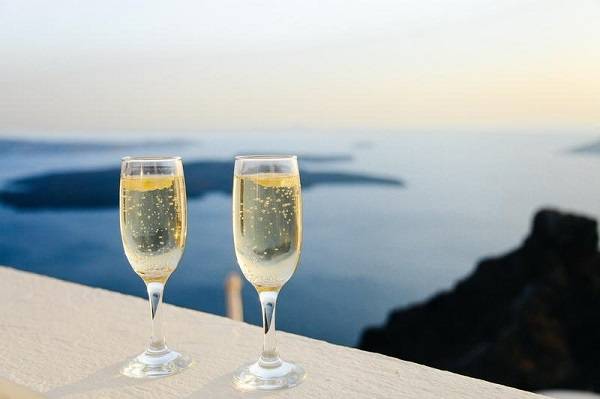
White semi-sweet wine Asti comes from Piedmont, Italy. For production, only the White Muscat grape variety is used. The wine has a sweet taste of muscat grapes, shaded with peach and honey. Calorie content of the drink:
- in 100 ml – 78 kcal;
- in 200 ml – 156 kcal;
- 750 ml (standard bottle) – 585 kcal.
Lambrusco bianco
Another representative of Italian wines, Lambrusco, is made from the grape variety of the same name. This species is recommended to be consumed by young people, aged no more than 2 years. The semi-sweet drink has a fresh, fruity taste. The aroma of the wine intertwines shades of strawberries and raspberries. Lambrusco bianco calories:
- in 100 ml – 62 kcal;
- in 200 ml (glass) – 124 kcal;
- 750 ml (standard bottle) – 465 kcal.
Soviet semi-sweet champagne
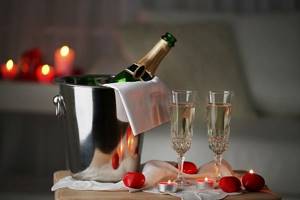
This champagne was first released in 1937 in Rostov-on-Don. For the production of semi-sweet Soviet, elite grape varieties are used: Aligote, Chardonnay, White Muscat, Sauvignon, White Pinot, etc.
Calorie content of wine:
- 100 ml – 90 kcal;
- in 200 ml (glass) – 180 kcal;
- 750 ml (standard bottle) – 675 kcal.
New World, Extra Brut
The House of Sparkling Wines “New World” is located in Sudak, Crimea (Russian Federation). The house was founded in 1878 by Prince Golitsyn. Today the company produces 17 brands.
Extra Brut is an exquisite wine for gourmets. The drink is produced on the basis of 3 grape varieties - Pinot Noir, Chardonnay and Riesling. The wine is aged in bottles for 3 years. Extra Brut has a refreshing sour taste, and the aftertaste reveals notes of almonds and figs.
Calories:
- 100 ml – 70 kcal;
- in 200 ml (glass) – 140 kcal;
- 750 ml (standard bottle) – 525 kcal.
Cricova, Muscat
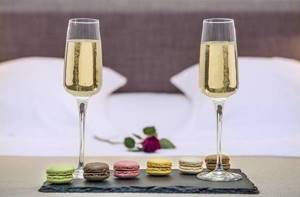
Sweet wine originally from Moldova is produced at the most famous winery in the country. The drink is made from European grape varieties Muscat and Chardonnay using classic French technology.
The production process involves aging the wine in bottles for 3 years. Cricova Muscat is characterized by a rich fruity taste with hints of honey. Calorie content of the drink:
- 100 ml – 100 kcal;
- in 200 ml (glass) – 200 kcal;
- 750 ml (standard bottle) – 750 kcal.
Not a weight loss product
Many representatives of the better half of humanity believe that a diet in which champagne is the main food product can be an excellent tool in the war against unjustly acquired kilograms. On the one hand, this drink (even the Brut variety) contains enough calories to saturate the body with a daily dose of beneficial microelements, but not “overload” it. From this point of view, the ladies' drink is useful, since even one glass can suppress appetite for a certain time.
On the other hand, the drink is contraindicated for people with gastrointestinal disorders, as it increases acidity and develops irritations of the digestive system. For this reason, the playful drink should not be drunk on an empty stomach. In addition, it is also important not to forget about a sense of proportion, since even in the absence of contraindications, this product is still alcohol.
With the exception of relatively light beer and natural red wine, champagne is the most low-calorie product, and this is also the reason that women and girls, the main connoisseurs of diets, prefer to drink it. This drink will prevent you from gaining excess weight while the ladies enjoy a pleasant evening. It is only important to remember how much you can drink so that the pleasure does not turn out to be destructive.
How it affects the body
Some people believe that drinking champagne can be compared to drinking soda. A glass of Brut wine simply quenches your thirst and cannot be considered alcohol. This opinion is far from the truth. The main catch was hidden in a glass of carbonated drink. The fact is that carbon dioxide, which is part of a bottle of champagne, increases the rate at which alcohol enters the bloodstream.
When combined with glucose, alcohol is absorbed faster, and a person gets drunk very quickly.
The most dangerous thing is drinking sparkling wine on an empty stomach. In this case, severe irritation of the digestive tract occurs and acidity increases. In addition, drinking champagne has a negative effect on liver function. It has long been noted that those who constantly drink alcoholic beverages suffer from cirrhosis of the liver.

Constant consumption of champagne has a negative effect on human memory and vision. The effect of alcohol causes irreversible negative processes in the body. Brut, like other wines, creates conditions for the rotting of metabolic products in the intestines. As a result, the body's condition quickly deteriorates.
Nutritionists say that in order not to gain weight, drinking two glasses is enough. This dose will not cause poisoning of the body.
Recommendations for use
Sparkling wines can be quite high in calories, and therefore should be consumed with extreme caution. To prevent the alcohol you drink from affecting your figure, you should follow the advice of experts:
- Semi-sweet and sweet sparkling wines are the most nutritious. So it is better to give your preference to brut, dry and semi-dry drinks.
- You should not drink sparkling wine on an empty stomach - carbon dioxide will cause an increase in appetite.
- Cocktails based on sparkling wines should be strictly avoided. Firstly, such drinks are high in calories due to the set of components. Well, secondly, cocktails can provoke a “brutal” appetite.
- Sparkling wines should be drunk after the foam has settled.
- A low-calorie snack should be served with champagne: fruit, cheese, fish or white poultry.
- For those who are on a diet, sparkling wine is strictly contraindicated.
- Before drinking sparkling wine, it is advisable to drink a few glasses of water or eat a little.
In addition, ideally you should limit yourself to one glass of sparkling wine per evening.
conclusions
So, having better known the favorite, legendary drink of the fair sex, we can say with confidence that champagne is one of the lowest-calorie drinks (sparkling shares this place with dry red wine and light beer).
This drink, provided that it is consumed in moderation and eaten with suitable dishes, will really not contribute to the gain of extra pounds. The most important thing is to monitor the rate of its consumption and not get carried away with this type of alcoholic product too often.
